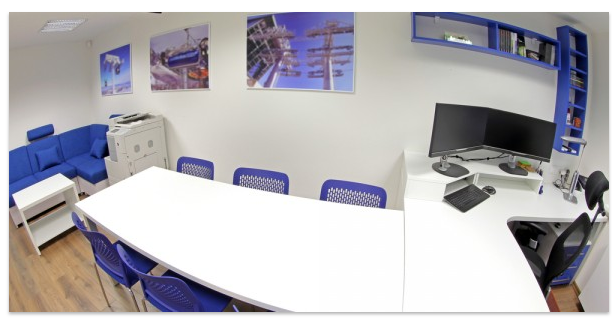The goal of Ergonomics is to provide maximum productivity with minimal cost; in this context cost is expressed as the physiological or health cost to the worker. In a workplace setting there are seldom a large number of tasks that exceed the capabilities of most of the work force. There may be jobs that will include a specific task that requires extended reaches or overhead work that cannot be sustained for long periods, by using Ergonomic principles to design these tasks; more people should be able to perform the job without the risk of injury.
Ergonomics
“Ergonomics applies information about human behaviour, abilities and limitations and other characteristics to the
design of tools, machines, tasks, jobs and environments for productive, safe, comfortable and effective human
use” (McCormick and Saunders 1993).
Proactive Ergonomics emphasises the prevention of work related musculoskeletal disorders through recognising, anticipating and reducing risk factors in the planning stages of new systems of work or workplaces. In effect, to design operations that ensures proper selection and use of tools, job methods, workstation layouts and materials that impose no undue stress and strain on the worker. Additional costs are incurred in redesigning or modifying work processes therefore it is more cost effective to reduce risk factors at the design stage.
A proactive approach to Ergonomics will ensure that:
- Designers will receive training in ergonomics and have appropriate information and guidelines regarding risk reduction
- Decision-makers planning new work processes should have knowledge of Ergonomics principles that contribute to the reduction or elimination of risk.
- Design strategies emphasise fitting job demands to the capabilities and limitations of workers. For example, for tasks requiring heavy materials handling, use of mechanical assist devices to reduce the need for manual handling would be designed into the process
- Other aspects of design should be considered including load design, layout of the workplace to allow for ease of access when using mechanical aids and eliminating unnecessary lifting activities.
ERGONOMIC PRINCIPLES THAT CONTRIBUTE TO GOOD WORKPLACE DESIGN
The goal for the design of workplaces is to design for as many people as possible and to have an understanding of the Ergonomic principles of posture and movement which play a central role in the provision of a safe, healthy and comfortable work environment. Posture and movement at work will be dictated by the task and the workplace, the body’s muscles, ligaments and joints are involved in adopting posture, carrying out a movement and applying a force. The muscles provide the force necessary to adopt a posture or make a movement. Poor posture and movement can contribute to local mechanical stress on the muscles, ligaments and joints, resulting in complaints of the neck, back, shoulder, wrist and other parts of the musculoskeletal system. Ergonomic principles provide possibilities for optimising tasks in the workplace .
ERGONOMIC PRINCIPLE DESCRIPTION
Joints must be in a neutral position
In the neutral position the muscles and ligaments, which span the joints, are stretched to the least possible extent
Keep work close to the body
If the work is too far from the body, the arms will be outstretched and the trunk bent over forwards
ERGONOMICS IN THE WORKPLACE
Avoid bending forward
The upper part of the body of an adult weighs about 40kg on average. The further the trunk is bent forwards, the harder it is for the muscles and ligaments of the back to maintain the upper body in balance
A twisted trunk strains the back
Twisted postures of the trunk cause undesirable stress to the spine
Alternate posture as well as movements
No posture or movement should be maintained for a long period of time.
Prolonged postures and repetitive movements are tiring.
Avoid excessive reaches
It is necessary to limit the extent of forward and sideways reaches to avoid having to bend over or twist the trunk
Avoid carrying out tasks above shoulder level
The hands and elbows should be well below shoulder level when carrying out a task
ERGONOMICS AND IRISH LEGISLATION
The Manual Handling of Loads Regulation
Many of the Ergonomic Principles, which have been detailed above, have been incorporated into Irish Legislation. The Safety Health and Welfare at Work (General Application) Regulations of 1993 contain regulations dealing specifically with the manual handling of loads.
ERGONOMIC PRINCIPLE DESCRIPTION
Limit the weight of a load that is lifted
There are guidance weight limits for both males and females detailed in Figure 2 of this document
Use mechanical aids Many lifting accessories are available to help lift and move loads
Avoid carrying loads with one hand
When only one hand is used to carry a load, the body is subject to mechanical stress
Use transport accessories
There are a large number of accessories such as roller conveyors, conveyor belts, trolleys and mobile raising platforms, which eliminate or reduce manual handling.
For more information go to http://www.annetteshanahan.com/ergonomics-workplace-design/

